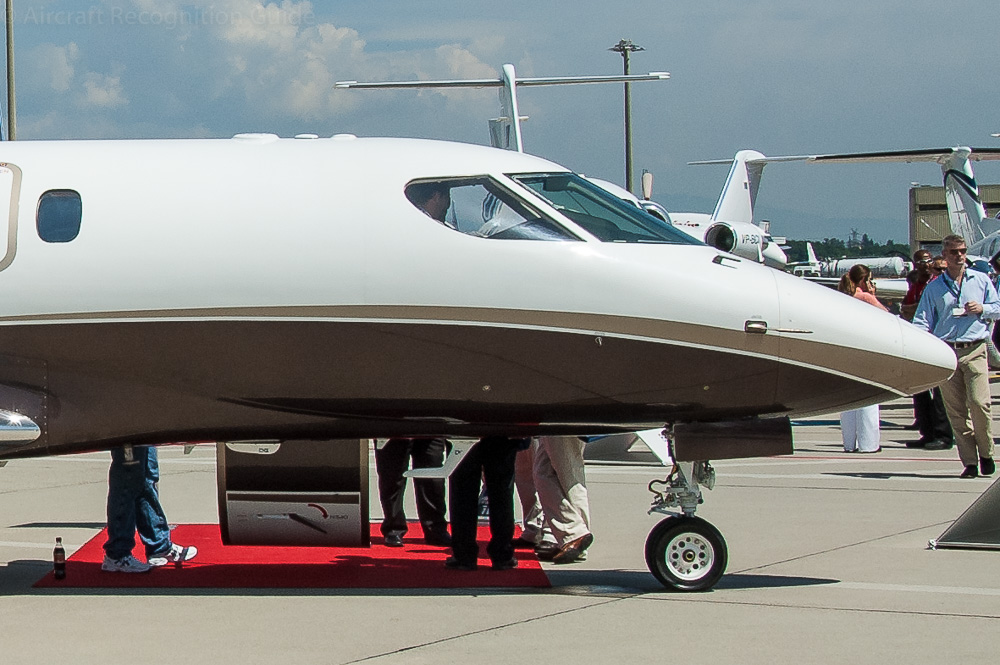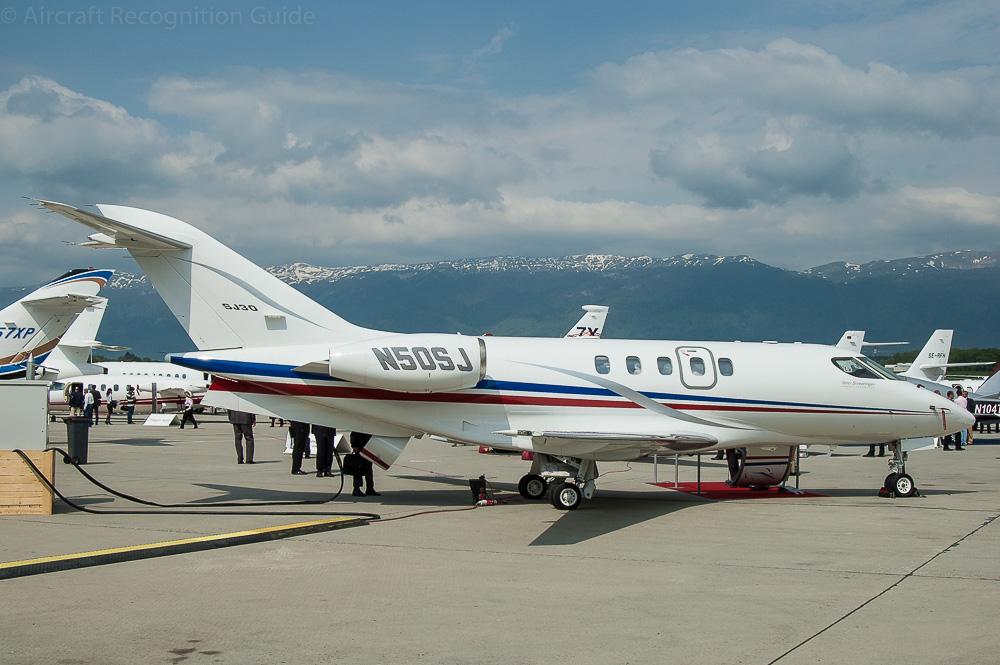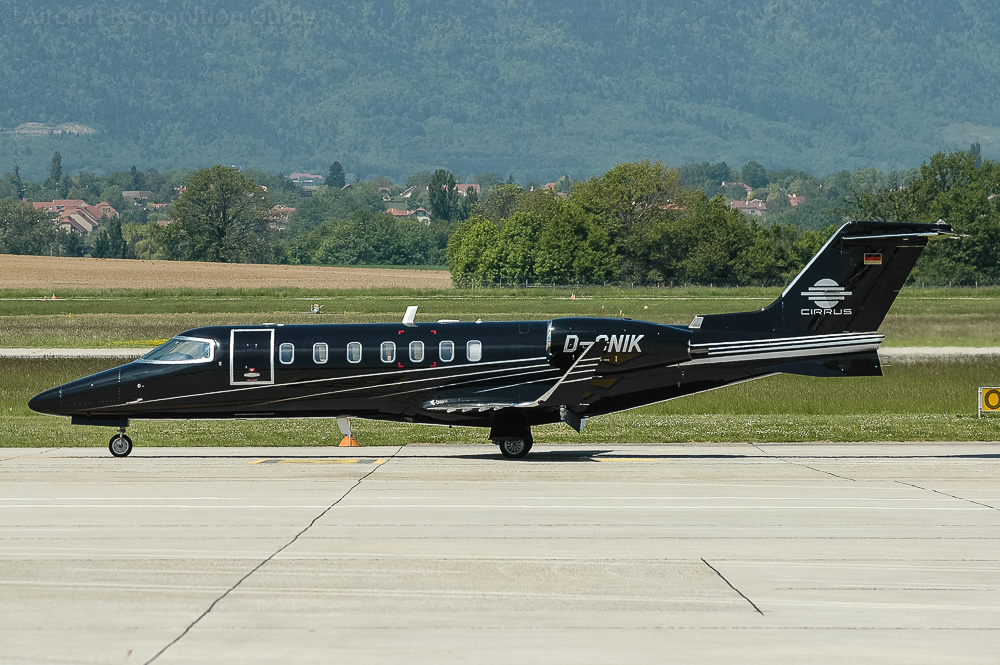
SyberJet (Sino Swearingen) SJ30
It seems to be a never-ending story with the SJ30. The small bizjet started its life in the 1980s, as SA30 in the head on Ed Swearingen. After seeking cooperation with the Jaffe Group it was renamed SJ30. The first prototype of the Sino Swearingen SJ30 flew in 1991. The aircraft was finally certified by the FAA in October 2005, but only about ten examples have been built so far. The design was first acquired by Eminvest, then by Metalcraft Technologies which has formed SyberJet Aircraft to restart production.
The configuration of the SJ30 is pretty standard with low-mounted swept wings, engines attached to the fuselage and a T-tail. Unusual, however, are the legs of the main landing gear, which look somewhat like those of a Jaguar fighter. Also the leading edge of the vertical stabiliser is of an S-shaped curve, ending at the end of the trailing edge.
The tail is however more characteristic, as the leading edge of the vertical stabiliser curves all the way from the dorsal fin to the top of the trailing edge.
Different versions
To differentiate between the different subtypes there is a lot to look at
- the length of the fuselage
- the number of the cabin windows
- the shape of the cabin windows
SJ30-1
This is the original prototype aircraft, to be the smallest of the family. It does not exist anymore, because it was converted to SJ30-2 and no further aircraft were built. The SJ30-1 had on each side four cabin windows in a row. On the left side it had an additional, separate cabin window just in front of the engine. The cabin windows were of a cut-off long oval shape.
The original SJ30, the SJ30-1.
SJ30-2, SJ30i & SJ30x
The stretched version is 1.3 m longer than the original version. This results in five cabin windows visible on each side. While the prototype retains the long oval windows, the subsequent aircraft have more rectanglar shaped windows.
Compared to the SJ30-2 the SJ30i has a new interior and updated avionics, but that is not visible from the outside. The SJ30x is to have Williams International FJ44-3AP-25 engines, but we will have to wait to see if this means anything for the external appearnce.
SJ30-2
Confusion possible with
Learjet 40/45/70/75
Learjets are also known for their sleek, fast appearance, so they are a potential source of recognition mistakes. All Learjets however lack the claw-like main landing gear and the curved leading edge of the vertical stabiliser. Moreover, all Learjets have either tip tanks or winglets, which the SJ30 does not have.
Embraer 505 Phenom 300
The same differences apply to the Phenom 300, which has winglets and no S-shaped vertical stabiliser.
Pilatus PC-24
Like the SJ30 the Pilatus PC-24 has no winglets, but for the rest the PC-24 looks more like a Learjet or Phenom than an SJ30 when it comes to the landing gear and vertical fin.








